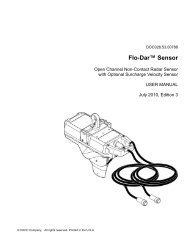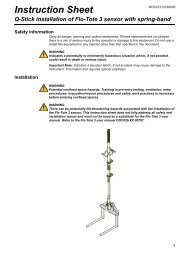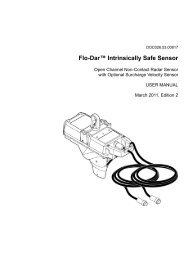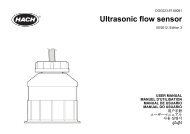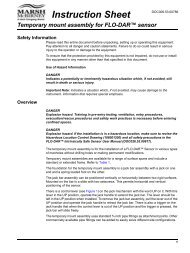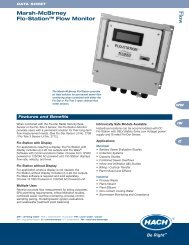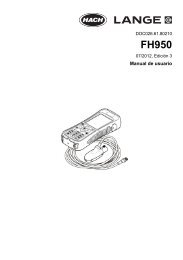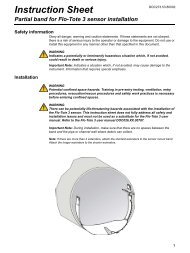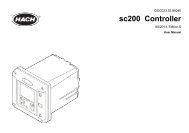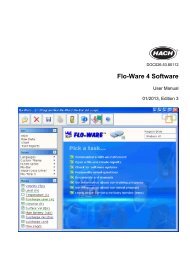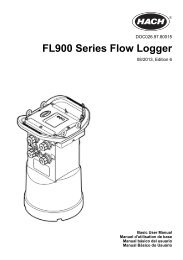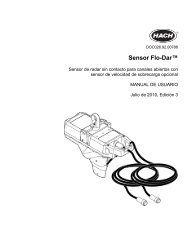FH950 User Manual English - Hachflow
FH950 User Manual English - Hachflow
FH950 User Manual English - Hachflow
You also want an ePaper? Increase the reach of your titles
YUMPU automatically turns print PDFs into web optimized ePapers that Google loves.
1. The equipment may not cause harmful interference.<br />
2. The equipment must accept any interference received, including interference that may cause<br />
undesired operation.<br />
Changes or modifications to this equipment not expressly approved by the party responsible for<br />
compliance could void the user's authority to operate the equipment. This equipment has been tested<br />
and found to comply with the limits for a Class A digital device, pursuant to Part 15 of the FCC rules.<br />
These limits are designed to provide reasonable protection against harmful interference when the<br />
equipment is operated in a commercial environment. This equipment generates, uses and can<br />
radiate radio frequency energy and, if not installed and used in accordance with the instruction<br />
manual, may cause harmful interference to radio communications. Operation of this equipment in a<br />
residential area is likely to cause harmful interference, in which case the user will be required to<br />
correct the interference at their expense. The following techniques can be used to reduce<br />
interference problems:<br />
1. Disconnect the equipment from its power source to verify that it is or is not the source of the<br />
interference.<br />
2. If the equipment is connected to the same outlet as the device experiencing interference, connect<br />
the equipment to a different outlet.<br />
3. Move the equipment away from the device receiving the interference.<br />
4. Reposition the receiving antenna for the device receiving the interference.<br />
5. Try combinations of the above.<br />
Product overview<br />
The portable velocity system is used in the field, laboratory and municipalities. Turbulent, noisy and<br />
low flows can be measured with this system.<br />
The meter and sensor get velocity information in conduits and streams. These measurements are<br />
important for calibration in municipal wastewater industries, as well as for environmental-impact<br />
evaluations.<br />
Two types of sensor are available: velocity-only and velocity plus depth. This manual covers both<br />
types of sensors. If information applies to a specified type of sensor, this fact is noted in the text.<br />
System overview<br />
An overview of the assembled system is shown in Figure 1. Refer to the documentation supplied with<br />
the individual components or accessories for more information.<br />
6 <strong>English</strong>



